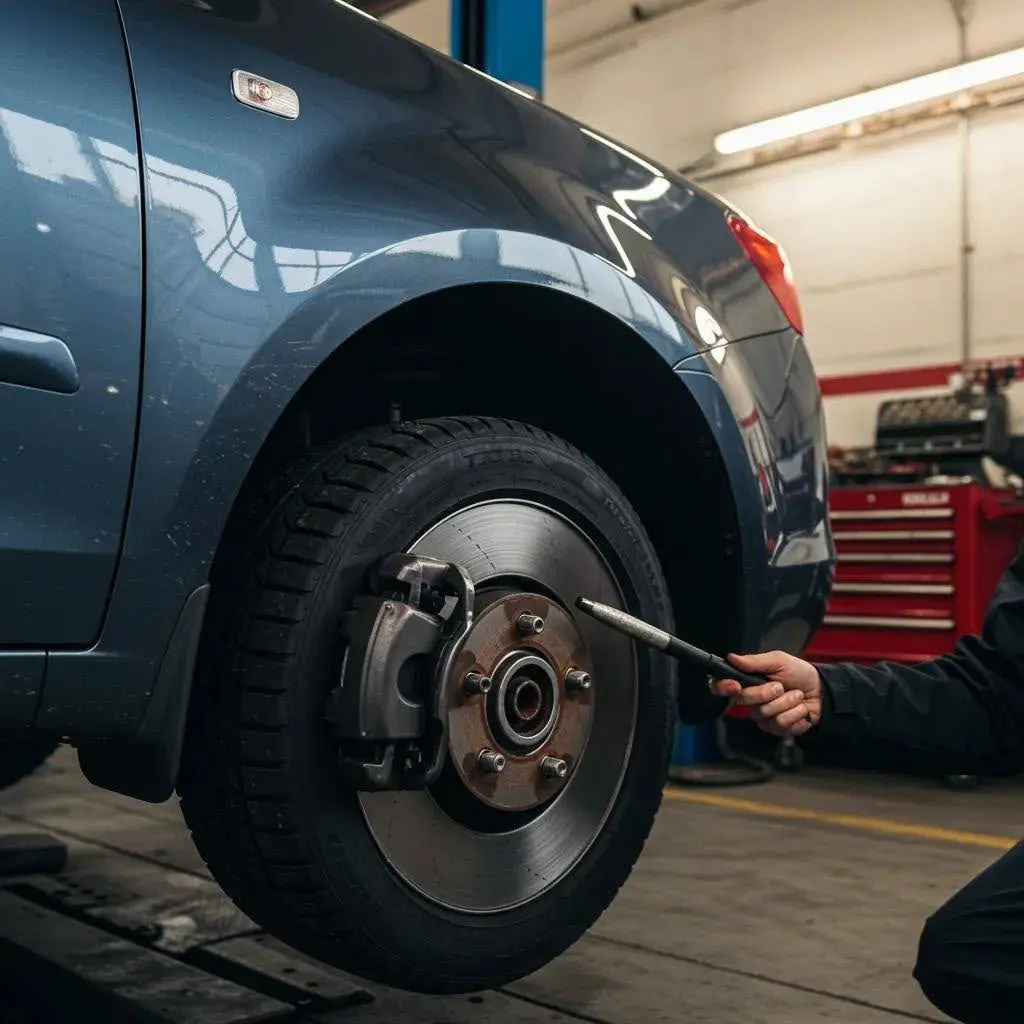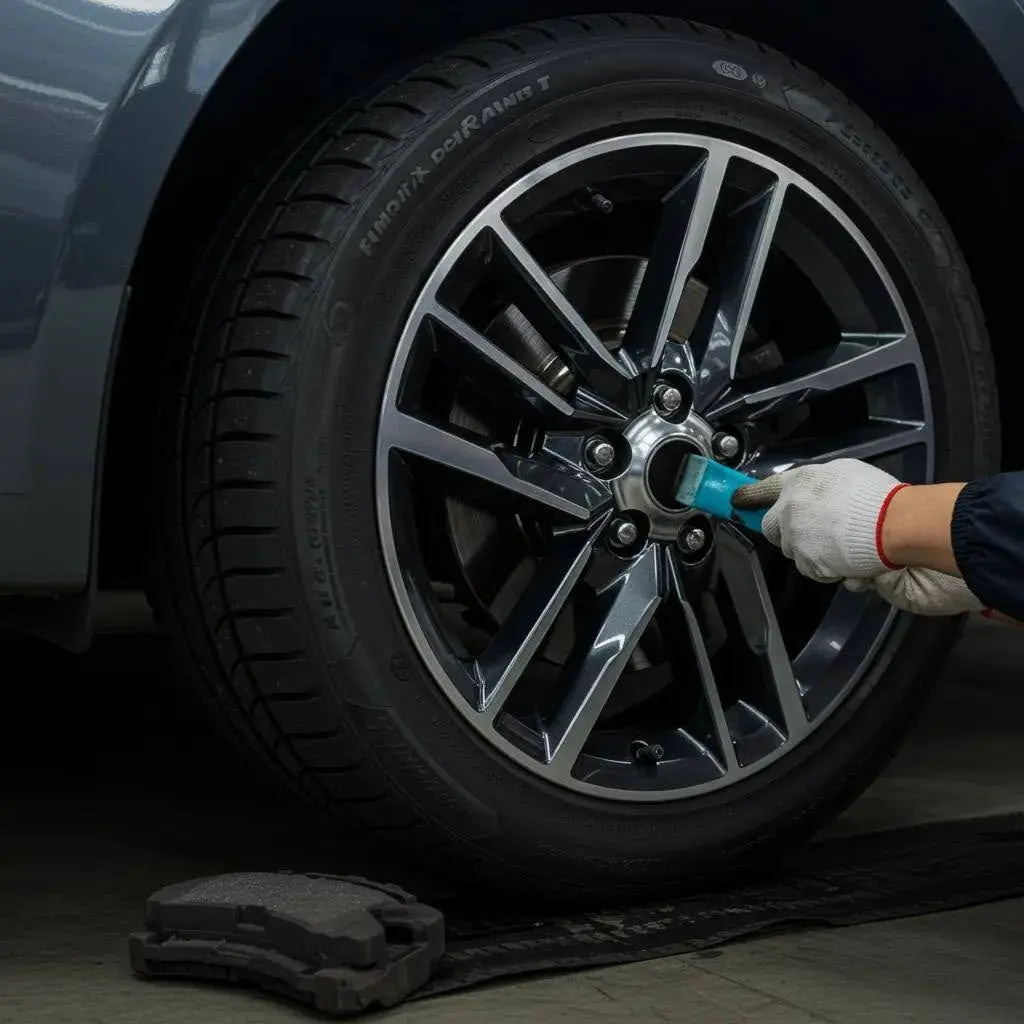
Not sure if your car or light van needs a Class 4 MOT? This guide explains what it is, which vehicles it covers, how it compares to other classes, and why to choose All Vehicle Services, plus pricing, prep tips, booking, and FAQs.
About Class 4 MOTs
A Class 4 MOT is the mandatory annual check for most cars and light commercial vehicles up to 3,000 kg design gross weight (DGW). It confirms that key systems, brakes, lights, tyres, steering, suspension, and exhaust, meet legal safety and emissions standards.
Only DVSA-approved centres can perform the test, helping prevent accidents and reduce pollution while keeping Sittingbourne’s roads safe. Knowing this helps you decide if your vehicle needs the annual check.
Class 4 MOT Inspection Details
During a Class 4 MOT, we inspect key safety, structural, and emissions components that determine roadworthiness. Our technicians check:
- Braking system performance and condition
- Lights, indicators, mirrors, and horn, operation and condition
- Tyres’ tread depth and overall condition
- Steering and suspension integrity
- Exhaust emissions and fuel system integrity
- Bodywork, seatbelts, windscreen, wipers, and washers, condition
This review helps reduce failures and maintain compliance while limiting emissions. Next, who sets the standards?
Class 4 MOT Standards and Oversight
The Driver and Vehicle Standards Agency (DVSA) sets and enforces MOT testing criteria across the UK. It issues a detailed testing manual so every approved centre follows the same procedures and pass/fail limits.
At All Vehicle Services, we follow DVSA rules, use calibrated equipment, and complete regular quality checks to maintain compliance, another reason to use an authorised centre
How Often Do You Need a Class 4 MOT?
Most Class 4 vehicles need testing every 12 months, from your last test date or a new car’s third anniversary. You can test up to one month early and keep the same expiry date. Missing the deadline risks fines and insurance issues, so booking ahead keeps you covered.
Vehicles for Class 4 MOTs
A wide range of private cars and light commercial vehicles fall under Class 4, mainly by seating and weight. Here’s who needs it, and who doesn’t.
Cars and Vans Requiring Class 4 MOTs
The Class 4 MOT applies to vehicles with a design gross weight (DGW) up to 3,000 kg and up to eight passenger seats. Common examples include:
- Standard cars like saloons, hatchbacks, and estates
- Dual-purpose vehicles that can carry up to eight passengers
- Light vans are used for small deliveries
- Motor caravans weighing under 3,000 kg DGW
These vehicles make up most Class 4 MOT bookings. Knowing your category helps avoid reclassification issues during testing.
Class 4 MOT for Specialised Vehicles
Taxis and ambulances with up to eight seats also fall under Class 4. Three-wheelers over 450 kg unladen are included if used to carry passengers or goods. These rules keep light passenger and utility vehicles to the same safety and emissions standards as regular cars and vans.
How Can You Determine Your Vehicle’s MOT Class?
Your V5C logbook lists the class under the “Vehicle Type Approval” section. If you’re unsure, check the DVSA guide or ask our team to confirm by weight and seating. Providing the correct class keeps your test valid and avoids penalties, then you can book a Class 4 MOT with confidence.
How Does a Class 4 MOT Differ from Other MOT Classes?
Here’s a quick comparison of Class 4 and Class 7 MOTs, highlighting their key attributes and typical uses.
Class 4 vs. Class 7 MOTs
Here’s a quick comparison of Class 4 and Class 7 MOTs, highlighting their key attributes and typical uses.
| MOT Class | Weight Limit | Primary Use | Testing Frequency |
|---|---|---|---|
| Class 4 | Up to 3,000 kg DGW | Passenger cars, light vans | Annual |
| Class 7 | Over 3,000 kg up to 3,500 kg DGW | Larger vans, small commercial lorries | Annual |
When Is a Class 7 MOT Required Instead of Class 4?
If your van or light commercial vehicle exceeds 3,000 kg DGW, you’ll need a Class 7 MOT. Class 7 applies to heavier goods vehicles, so a quick weight check usually confirms the correct class.
Why Is It Crucial to Know Your Vehicle’s MOT Class?
Booking the correct class prevents invalid certificates and fines. It also ensures we inspect your vehicle against the right legal criteria for its weight and use, saving time, money, and stress.
Class 4 MOT Cost and Time
Prices and timings vary by garage, but transparency matters. Here’s what to expect at a DVSA-approved centre like ours.
Class 4 MOT Price at All Vehicle Services
At our Sittingbourne garage, a standard Class 4 MOT is £40. We offer clear pricing with no hidden charges; this fee covers the standard tests and admin.
How Long Does a Class 4 MOT Test Typically Take?
A Class 4 MOT typically takes about 45 minutes (allow up to an hour) from drop-off to certificate. Our efficient process helps minimise waiting time. Book online to choose a slot that suits you.
Are There Any Extra Charges or Free Retests Available?
If your vehicle needs minor work to pass, we’ll provide a clear, itemised estimate before starting. All Vehicle Services offers an MOT at £40 and includes a free retest within 2 weeks of your first test, no obligation to have repairs done with us [VERIFY]. This means you won’t be charged again for the same failed items.
How to Get Your Vehicle Ready for a Class 4 MOT Test?
A few simple steps before your MOT can avoid common fails and save time and money. Here’s how to prepare:
Common Reasons for MOT Failure
Vehicles most often fail their MOT due to:
- Tyre tread that is worn or below the legal limit
- Lights or indicators that are not functioning correctly
- Windscreen wipers and washers that are faulty or ineffective
- Worn brake pads or uneven braking
- Excessive exhaust emissions
Fixing these issues beforehand reduces the risk of a fail and extra costs, making your test smoother.
How Can You Perform a Pre-MOT Check Yourself?
Before your appointment, do a quick visual check:
- Check your tyres for a minimum tread depth of 1.6 mm and ensure there are no cuts or bulges.
- Test all exterior lights, including brake lights and indicators, to confirm they are working correctly.
- Ensure your windscreen, mirrors, and wipers provide clear visibility and are in good condition.
- During a gentle test drive, pay attention to your brakes, listen for noises or pulling to one side.
- Look at your exhaust pipe for any obvious signs of damage or excessive noise.
Running through this checklist can help you identify and fix potential problems early, keeping your MOT on track.
Why Choose All Vehicle Services for Your Class 4 MOT in Sittingbourne?
Choose a garage that delivers fair pricing and expert service, what we pride ourselves on as a local business.
Why Choose All Vehicle Services?
As a DVSA-approved centre, we combine experienced technicians with a friendly, straightforward approach. Our team understands Kent’s driving conditions and offers tailored maintenance advice.
How Does All Vehicle Services Guarantee Fair Pricing and High Quality?
We display our fixed MOT fee upfront, no hidden charges. If repairs are needed, you’ll get a written estimate before work starts. Our MOT test center in Sittingbourne’s quality control includes a dual-stage inspection to ensure repairs meet DVSA standards.
Customer Experiences with Class 4 MOTs
Many of our long-standing customers praise our punctual service, clear communication, and straightforward approach. We also offer a free MOT retest (in line with DVSA guidelines) and provide maintenance advice, which we believe underscores our commitment to safety and customer satisfaction.
How to Book Your Class 4 MOT Test at All Vehicle Services
Booking is simple, call us or use our easy online system.
Booking Your MOT Online or by Phone
To secure a slot, call our reception with your registration and preferred date for instant confirmation. Or use our online form to choose from available times, your bay will be reserved for the Class 4 MOT.
Can I Combine My MOT with Servicing or Other Repairs?
Yes. Many customers book their MOT with servicing or tyre checks to save time. We can service your car during the MOT, keeping it compliant and in good mechanical condition in one visit.
Frequently Asked Questions About Class 4 MOTs
Clear answers to common Class 4 MOT questions, covering requirements and process.
Vehicles Requiring a Class 4 MOT
A Class 4 MOT is required for cars with up to eight seats, light vans up to 3,000 kg DGW, motor caravans, and taxis/ambulances with up to eight seats. Three-wheelers over 450 kg unladen also apply. Confirm your vehicle type to book the correct inspection.
If Your Vehicle Fails the Class 4 MOT
If your vehicle fails, you’ll receive a “refusal of MOT test certificate” listing defects. You can choose repairs with us, with a free partial retest within ten days, or go elsewhere [VERIFY]. Fixing failures promptly restores compliance and reduces downtime.
How Can I Check My Vehicle’s MOT Status Online?
Use the official government vehicle check to see your MOT history and expiry date. You’ll need your registration number (VIN optional). It shows past results, advisories, and your next due date, helping you avoid lapses.
Do Motorhomes Need a Class 4 MOT?
Yes, motorhomes under 3,000 kg DGW require a Class 4 MOT, like other light vans and campervans. Confirm your motorhome’s DGW before booking.
How Long Is a Class 4 MOT Certificate Valid For?
A Class 4 MOT certificate is valid for 12 months from the test date. You can test up to one month early without changing the original expiry. Plan ahead to maintain compliance.


